Respirable Crystalline Silica (RCS) as a Health Hazard
Added on 2021-06-15
30 Pages6433 Words246 Views
Occupation Health Management 17Occupation Health Management Program(Author’s name)(Institutional Affiliation)
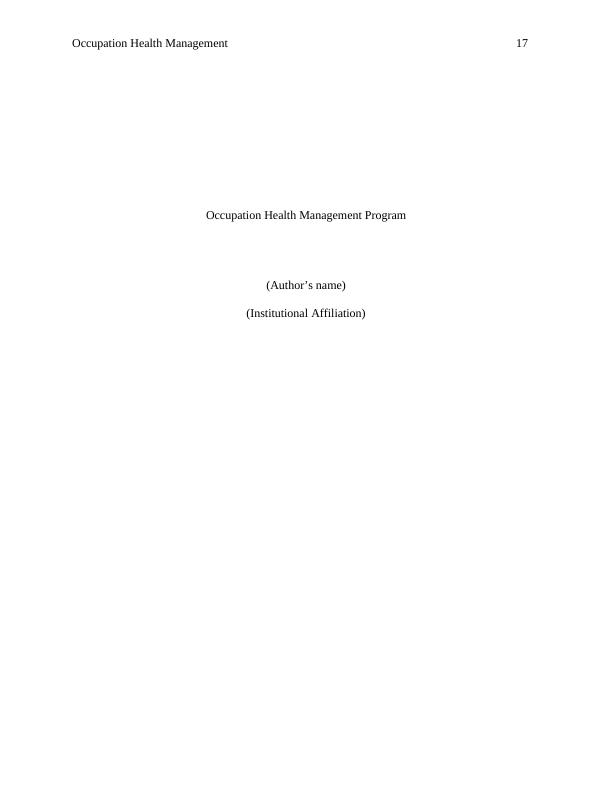
Occupation Health Management 2
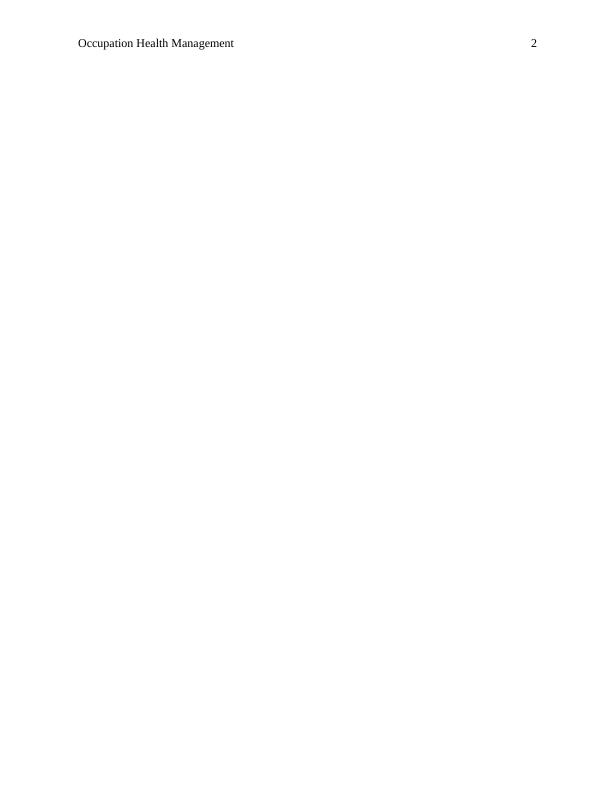
Occupation Health Management 3Executive SummaryRespirable Crystalline Silica (RCS) has been proved to lead to various health hazards majorly Silicosis. Other diseases related to RCS include kidney disease and cancers. Therefore, proper programs need to be developed in order to prevent diseases to workers exposed to silica. This study represents an occupational health program for the 20 miners working in the quarry. The major aim of the program is to promote their health by preventing RCS related diseases. The study has addressed various surveillance and disease assessment methods used to assess the risksthe workers are exposed to. In addition, the study has demonstrated various behavioral attitudes and changes that may affect the miners in a quarry. The study has also addressed various performance indicators that can be used to check if the program is a success or not. Other than that, the study has included an action plan of a period of three years with a major objective being: To minimize exposure to respirable crystalline silicon to 0.1 milligrams per cubic meter (0.1mg/m3) by putting up measures to reduce exposure of workers to RCS over a period of 3 years. The major recommendation of the study is;Employees should be protected from being exposed to RCS exceeding 50μg/m3, an 8- hour TWA which is the highest limit permitted, as per the OSHA standards, through the use of engineering controls, or by the use of respirators when the engineering controls donot yield acceptable results.

Occupation Health Management 4ContentsOccupation Health Management Program.................................................................................1Executive Summary.........................................................................................................................21.0 INTRODUCTION.....................................................................................................................41.1 Introduction Occupational Health Management Program Rationale/ Background...............51.2 Aims and Objectives..............................................................................................................62.0 DISCUSSION............................................................................................................................62.1 Health Surveillance Assessment............................................................................................62.2 Behavioral Attitude Changes.................................................................................................82.2 Ethical Consinderations.......................................................................................................102.3 Performance Indicators To Measure Improvements For Better Health And Well Being...113.0 OCCUPATIONAL HEALTH PROGRAM............................................................................124.0 ACTION PLAN.......................................................................................................................145.0 CONCLUSION........................................................................................................................176.0 RECOMMENDATIONS.........................................................................................................18References......................................................................................................................................20
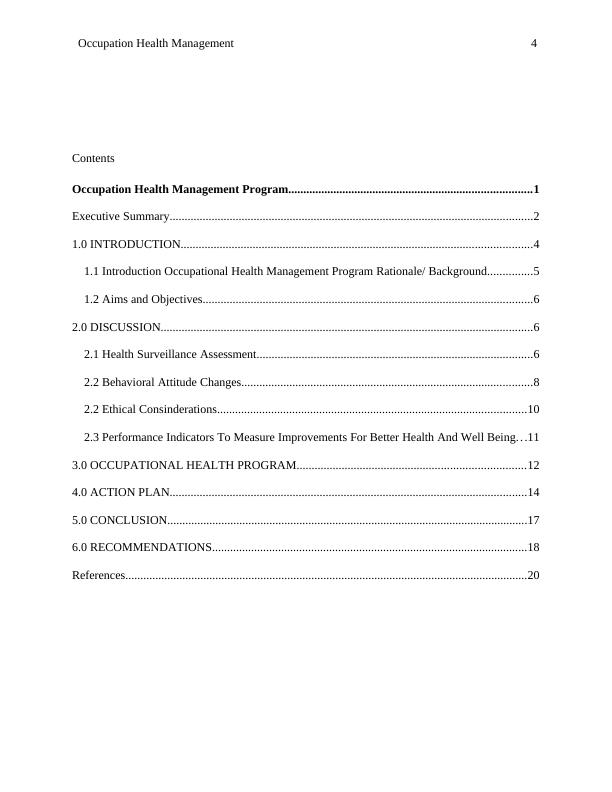
Occupation Health Management 51.0 INTRODUCTIONSince all occupations have potential and actual occupational health hazards, human resources managers recommend development of workplace health and wellbeing occupational programs as required by work health and safety act 2011 of the Australian law (Cormack & Chennel2018). According to world health organization (WHO), early detections of health hazards at workplaces offer better chances of health risks management and prevention of any possible diseases that may rise or reduction of the speed of which the disease process may occur among workers(ÖZBAY, 2017). Therefore, for a better workplace environment an occupation workplace health program and guideline need to be enforced ("WorkSafe", 2018). For a good occupation health program to be achieved, various steps are involved which include; surveillanceand risk assessment of the workplace in order to identify the risk hazards, identification of correct equipment and resources needed, identification of correct aims and objectives in order to
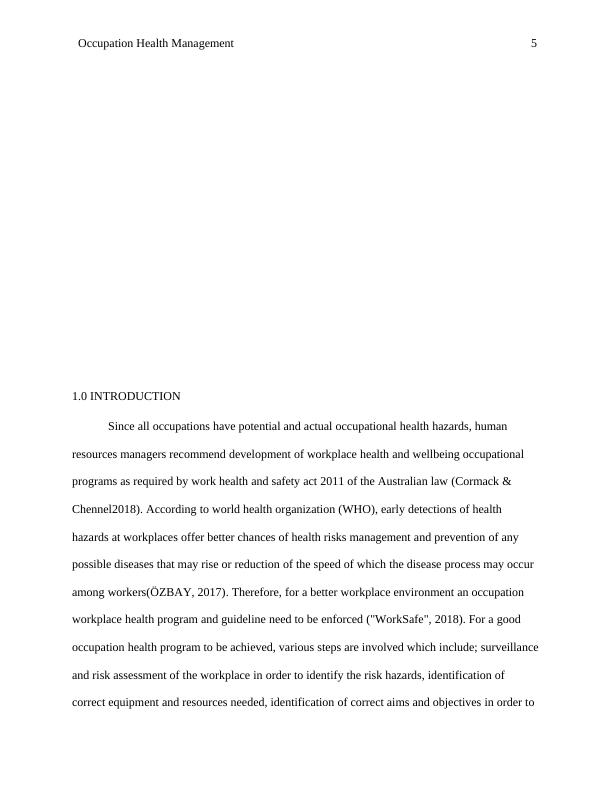
Occupation Health Management 6achieve the required outcomes, use of correct legislation and ethics as recommended by the law, development of an action plan that is timely based and implementation of the whole program(Gerand et al 2004). This study seeks to develop a health occupation health program for workers in a mining quarry that currently employs about 20 individuals working in an 8 hours shifts(Cormack & Chennel2018). Although the mining quarry have established and developed certain measures to control the amount of silicon dust the workers are exposed to like fogging system, conveyers covers, andproperly localized ventilation, there are still high risk for workers to be exposed contacting silicon related respiratory health diseases like silicosis and other health conditions(ÖZBAY, 2017). Therefore our main objective in this guideline is to develop a well-organised health program for these workers in a control room identifying all silicon health-related risk and developing an action plan that is well timed with correct and attainable outcomesin order to minimize respiratory and other silicon related diseases for the workers(Cormack & Chennel2018). 1.1 Introduction Occupational Health Management Program Rationale/ BackgroundHistorically, RCS dust has been one of the major health hazards leading to the enormousburden of occupational ill health with countless death from diseases majorly silicosis(Harper & Key-Schwartz, 2017). Silicon has been under surveillance over the years and the morbidity and mortality of a large number of exposed individuals have been proved and studied (OHS, 2018). In Australia Silicon is claimed to have more dangerous health effects similar to asbestos and that it can cause serious health effects to miners. Other than silicosis, RCS has been known to cause other potential health effects(Teale, 2013). According to International Agency for Research on Cancer (IARC), RCS is responsible for group 1 carcinogens for a variety of lung cancer. Other
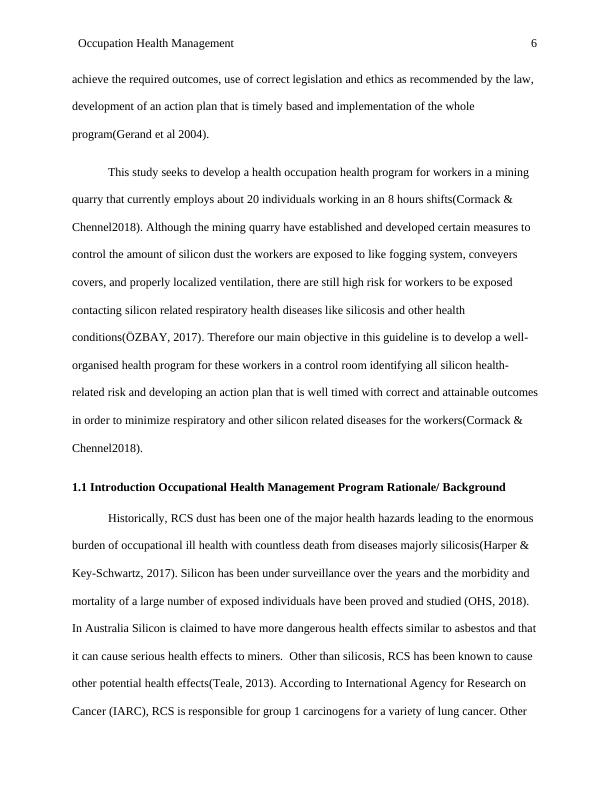
End of preview
Want to access all the pages? Upload your documents or become a member.
Related Documents
Occupational Health Surveillance for RCS in Mining Industrylg...
|21
|5228
|334
Assignment on Occupational Healthlg...
|18
|4045
|34
Silica – Technical guide to managing exposure in the workplacelg...
|15
|4912
|17
Causes and Prevention of Silicosis Assignmentlg...
|13
|3530
|144
Health Surveillance for Silica Dustlg...
|12
|3701
|38
Risk Assessment for Occupational Exposure Essaylg...
|11
|3593
|63